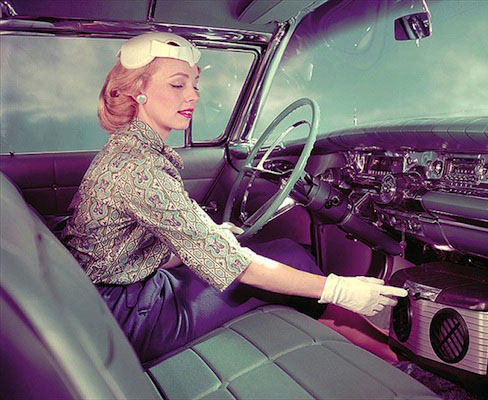
Detroit might have once been the centre in the United States of all things automobile, but it had very little to do with the introduction of air-conditioning in mainstream cars – that initiative belongs to a group of pioneers in Dallas, Texas.
“People take it for granted today, but in the early ’50s, Detroit didn’t think many buyers even wanted air conditioning,” said Texas author Rod Barclay, who has written a book on the influence Dallas had on the development of air conditioning.
He says that Detroit executives at General Motors, Ford, and Chrysler had no idea of what a sizzling summer in Dallas was like. “Their concept of summer was relaxing in straw hats on the shores of little lakes in Michigan, sipping whiskey,” he said.
In Dallas, where summer temperatures would regularly soar through 45C, car seats would burn your backside. Even with all four windows wound down it was like driving along in the inside of a dry cleaner’s.
Barclay’s book, Boy, That Air Feels Good, tells how the Texas pioneers, true to the Long Star State ethos, went their own way to show Detroit that there was demand for air conditioning in mainstream models.
“Detroit would not have responded as quickly as they finally did if we hadn’t had these companies in Dallas pushing and creating the market,” Barclay said.
The Dallas groups – manufacturers and car dealers – competed among themselves for sales but also shared technical information. “The Dallas A/C guys would gather around a new car in September and build a prototype air-conditioning unit and then document it for all the companies to use,” Barclay said.
The result was that Dallas had a growing air-conditioning base more than 60 years ago, while Detroit’s Big Three mostly debated the systems. They “were not really committed or focused,” Barclay said. “No executive decision on air conditioning was made until 1954.” Some of the Dallas manufacturers had been building and fine-tuning them for years by then.
Air conditioning had been available in US cars since 1939, but only on expensive luxury models such as Packard. Cadillac built a handful of air-conditioned vehicles in 1941, but the bulky units had to be mounted in boots and were not especially effective.
In the late 1940s, Lone Star Cadillac in Dallas began fitting some of its new cars with after-market air-conditioning systems, made in Texas. They sold dozens of them, getting $US300 or more for the option, Barclay said.
Barclay, 77, is a mechanical and industrial designer and editor of a newsletter for the Studebaker Drivers Club. “I knew air-conditioning kits had been made in Dallas in the ’50s,” Barclay said. “But before I got into it, I didn’t realise that almost all of the units had been made in Dallas.”
